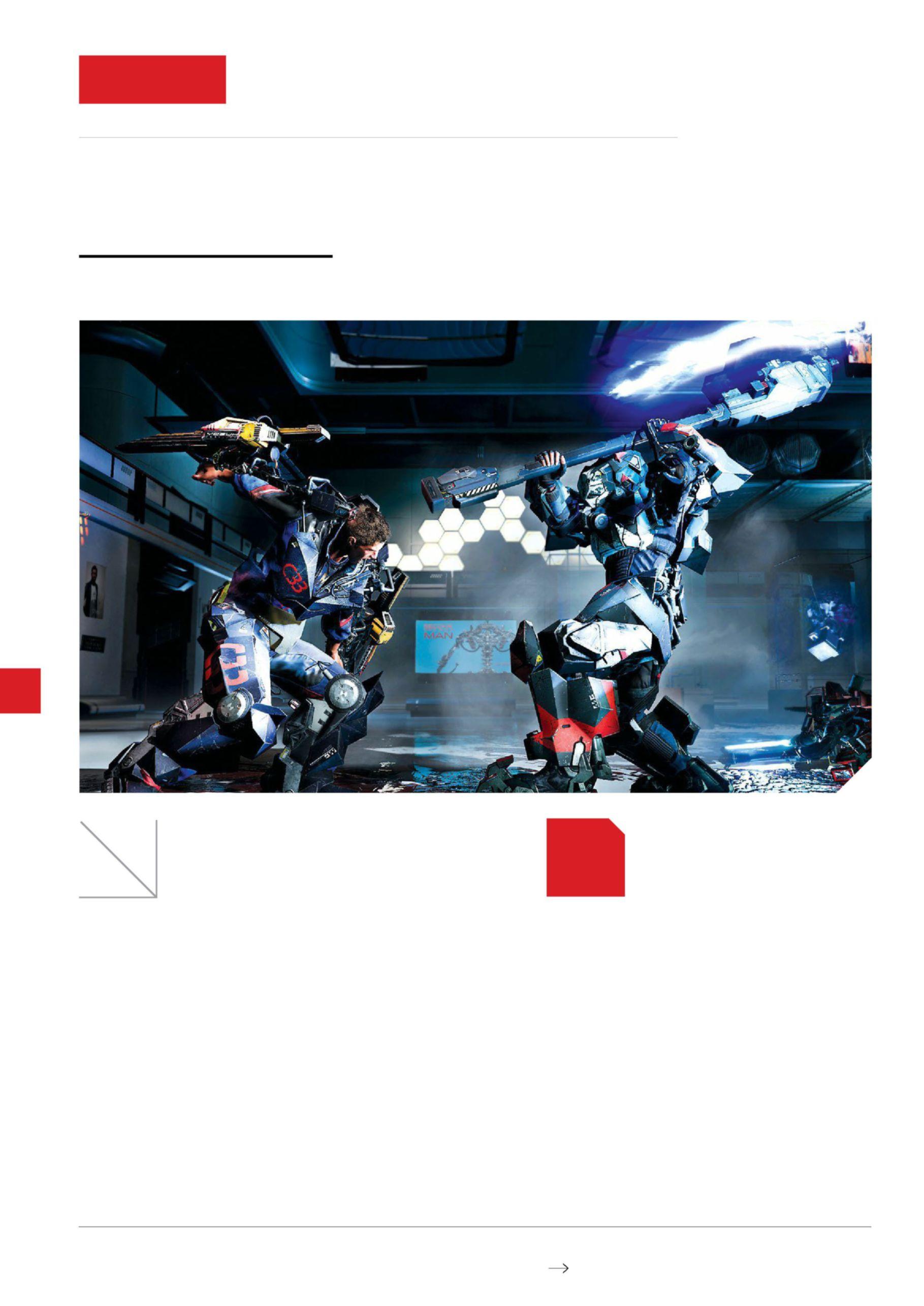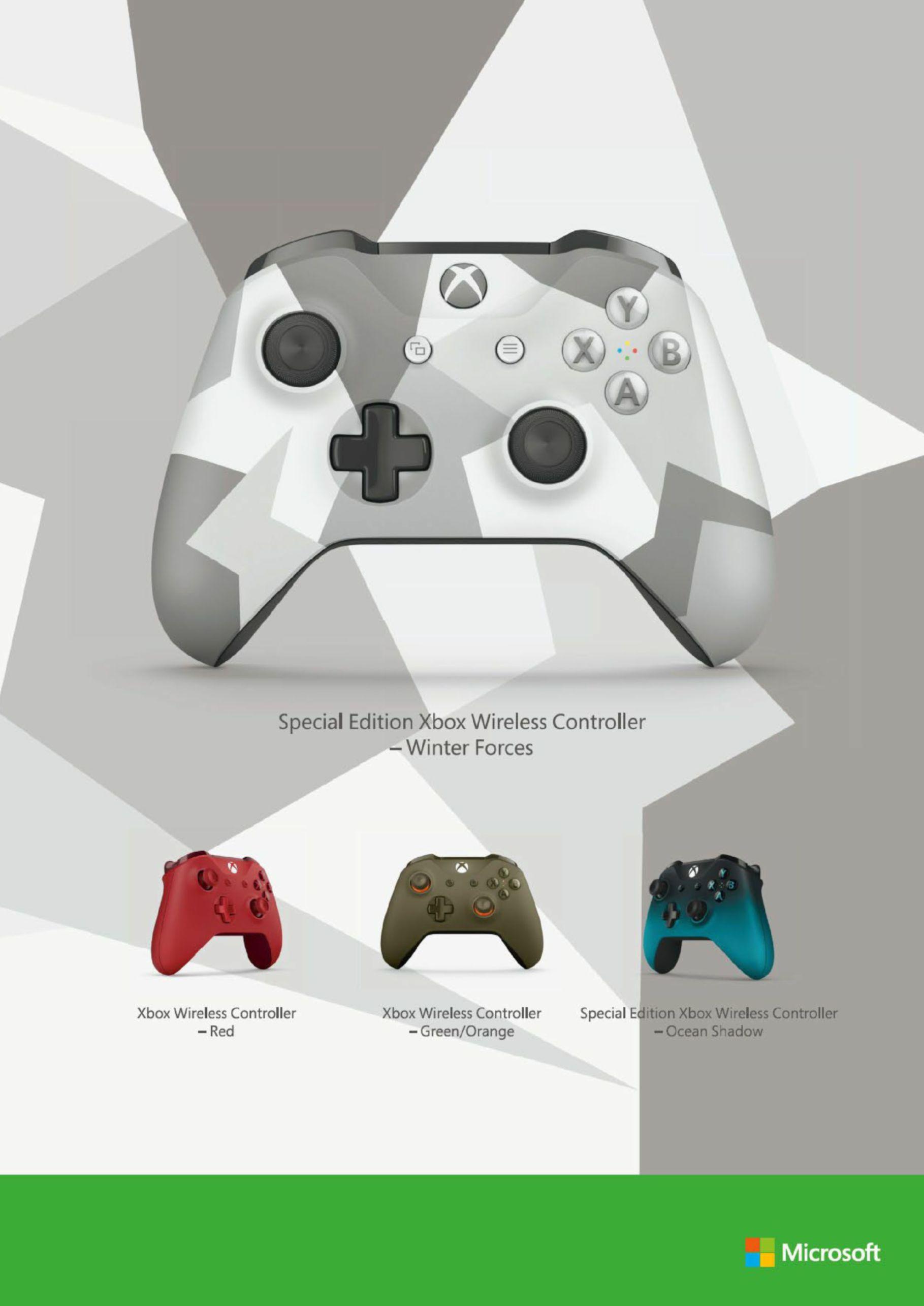
5 minute read
The surge
Deck 13 Interactive is also responsible for the mediocre though much less overtly bad Lords Of The Fallen
Publisher FoCuS Home InteRACtIve / DeveloPer DeCk 13 InteRACtIve / format XboX one / release Date out now / cost £39.99
Rage quits against the machines robert Douglas
If you’re a Dark Souls fan then chances are you’re still weeping inside at the bitter knowledge that the stalwart action RPG series has now come to an end. Left behind in its majestic wake on Xbox One is this promising conceit unconvincingly rolled up in an offensively mediocre game. It’s packed with what the generous will call cultural homages and what we will call tired genre tropes.
First though, that tasty conceit. For all the faults, and there are many, this is a sci-fi stab at Dark Souls. And not your epic operatic sci-fi either, rather your clanging-noises-in-thedistance-while-the-lights-go-out type of sci fi. That sounds great doesn’t it?
The first few moments are promising too. Your hero (boringly dubbed Warren – sorry OXM senior art ed Warren!) is trussed up and drilled with painful lasers after a botched anaesthetic leaves him conscious as a metal suit is grafted to his skeleton. It’s a juicy start, reminiscent as it is of James Cameron’s Avatar. Warren begins the game in a wheelchair and joins a shady corporation in order to walk again. After his surgery he awakens to chaos: a manufacturing plant filled with nasty men in robot suits that want to hurt him further.
Any leeway you give the game in these opening sections will give way fairly sharpish, even faster for Dark Souls veterans, as you peel back the referential layers to find the game ticking away underneath.
’Bot stuff
Combat is the main event, of course, and The Surge has one glaring flaw: a lack of clarity. A key tenet of this now familiar stamina-based combat model is the ability to learn from, and to react to, the things you see. In Souls that might require you to let incoming attacks bounce off a shield as you observe a new foe. In other actioners you might be required to react in the moment, at the edge of perception, via twitchier inputs.
The Surge cannot offer either of these approaches, as its laggy movement and animation require unsatisfying advance button taps. The enemies you encounter are also harder to read than a Japanese newspaper that’s been eaten by a tapir.
Enemy models are bulky, ’80s robot affairs, all exposed wires and hissy messes. In stasis they look boring, and in motion they telegraph terribly. Their one saving grace would be the neat mechanic which allows you to rip bits of them off to bedeck your own meched-up bodice. This potentially inspiring feature, however, means too many of the game’s standard
short cut
What is it?
A third-person action RPG with robots and body horror. Who’s it for?
Gamers who will forgive anything for another bitter bite of a stamina-based combat fruit.
What’s it like?
Hard sci-fi meets Dark Souls in a dark alley, punts it in the ankles and does a runner with its copy of James Cameron’s Avatar.
Right it’s more Dead space than Dark souls in terms of level structure, eschewing the open-ended spiralling maps for more regimented smaller spaces, though with shortcuts unlockable throughout. left there are no magic powers here. this role is taken up by an accompanying bot that you can equip with additional special moves.

enemies have to adhere to certain humanoid body shapes – they must have arms and legs and a head for you to disassemble.
Get to a boss fight, meanwhile, and you’ll generally find yourself swiping at the ankles of huge mechs, the animations for which tend to play out of frame above your head somewhere. These are problems that were ironed out of the genre a generation ago.
Swing and a miss
We touched on the slow response of your mech-suited hero to his surroundings and your button taps, and The Surge could just about get away with a wholly predictive combat system rather than a reactive one. There could still be some satisfaction to be had in guessing an enemy’s attack pattern and pre-emptively pushing buttons to counteract what they have done in your past encounters. But there are a couple of extra spanners in the works: multi-attack inputs in the middle of combos and unbreakable animation cycles that have an enormous effect. This means that a single button-tap while wielding certain weapons in certain situations can execute unstoppable multi-part attacks, each taking up time in your attacking animation repertoire. One tap can lead to tens of frames of uninterruptable swings.
This means there is simply none of the twitch play, none of the lastgasp dodging or reactive counter attacking you might see in a Souls game. You are either guessing correctly or you are guessing wrongly as to what might be the right move at any particular time, with no leeway given to instinct. This means a crucial ingredient is missing: you have a high difficulty level here, but one devoid of the satisfying ‘I can’t
wReCkInG CRew
the story of The Surge is subtly told, with few solid clues as to why warren has awoken to a mech-pocalypse. Dialogue trees and the occasional news feed intersperse the combat, but it’s all so reminiscent of sci-fi tropes, without really expanding on any of them, that it feels tired rather than intriguing. It never asks a question you can’t guess the answer to, and if you guess wrong you were never that invested to care anyway. believe I just did that’ head-shakes upon your eventual victories.
It’s not enough to say that The Surge is bad because it was always going to have to exist in Dark Souls’ shadow. We are ready for someone to take the fundamentals and run with them. And while the idea of this setting, and the concept of its fresh mechanics, take aim at doing just that, the execution here lacks any of the finesse and satisfaction of the genre’s progenitors. n
oXm verDict
A sloppy sci fi swing for the Dark Souls crowd which sadly misses.
4












